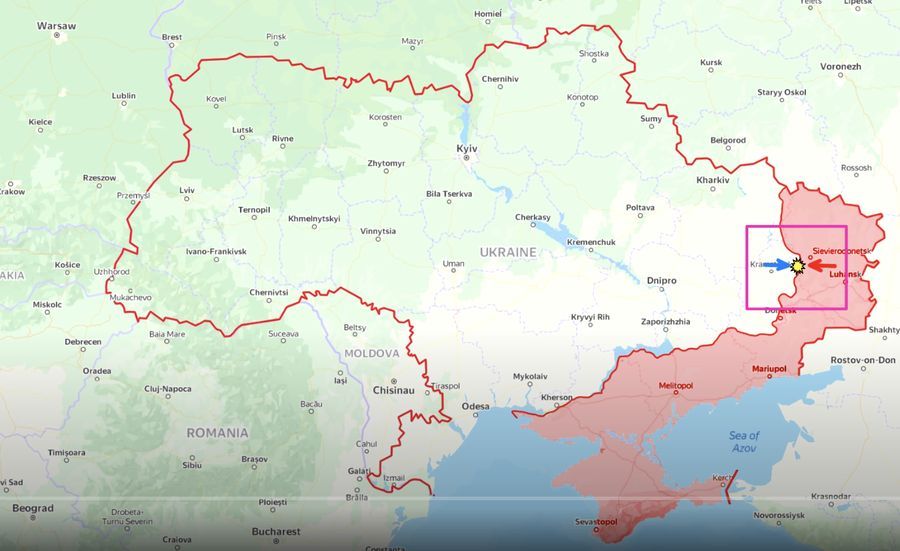Day 779: 12 April
Today, there are a lot of updates from the Siversk direction.
Here, Russians significantly increased the intensity of their assaults after a long pause.

The reason why Russian forces launched the offensive to capture Siversk is the strategic importance of this town. Capturing it would enable them to set the ground for a much broader assault on Kramatorsk – the capital and largest Ukrainian-held city in Donbas.
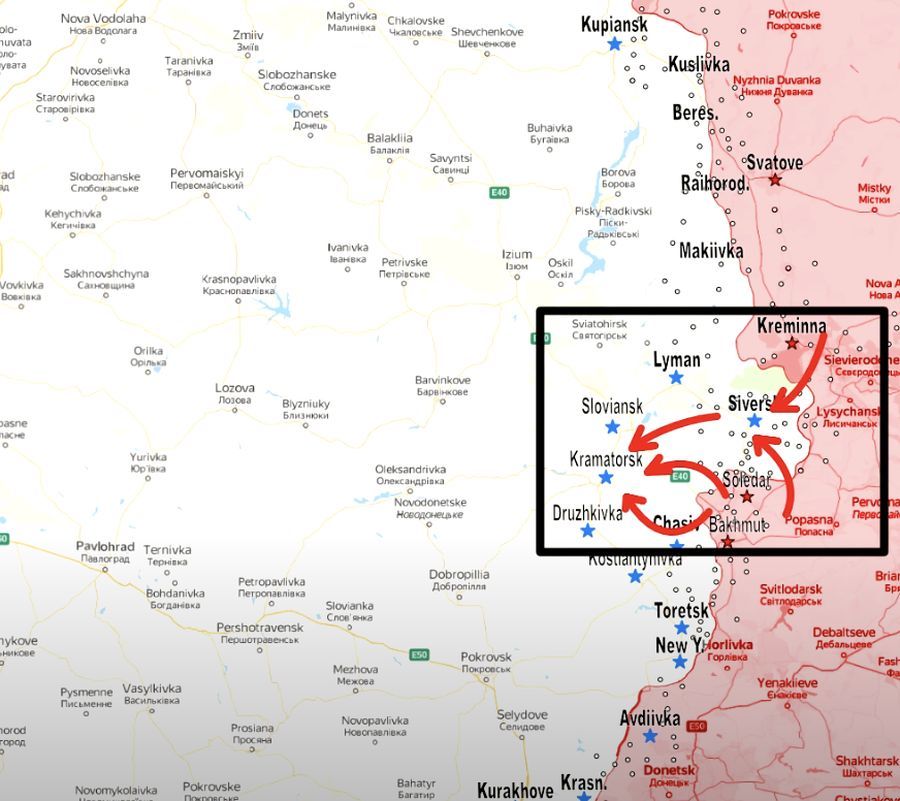
In the past, Russians halted their attacks on Siversk after the capture of the Sievierodonetsk-Lysychansk agglomeration in the summer of 2022 due to a lack of forces and a subsequent shift of focus to Soledar and Bakhmut. Ukrainians exploited this opportunity by capturing important tactical elevations around Bilohorivka, solidifying control over the region and stabilizing the front line even more.
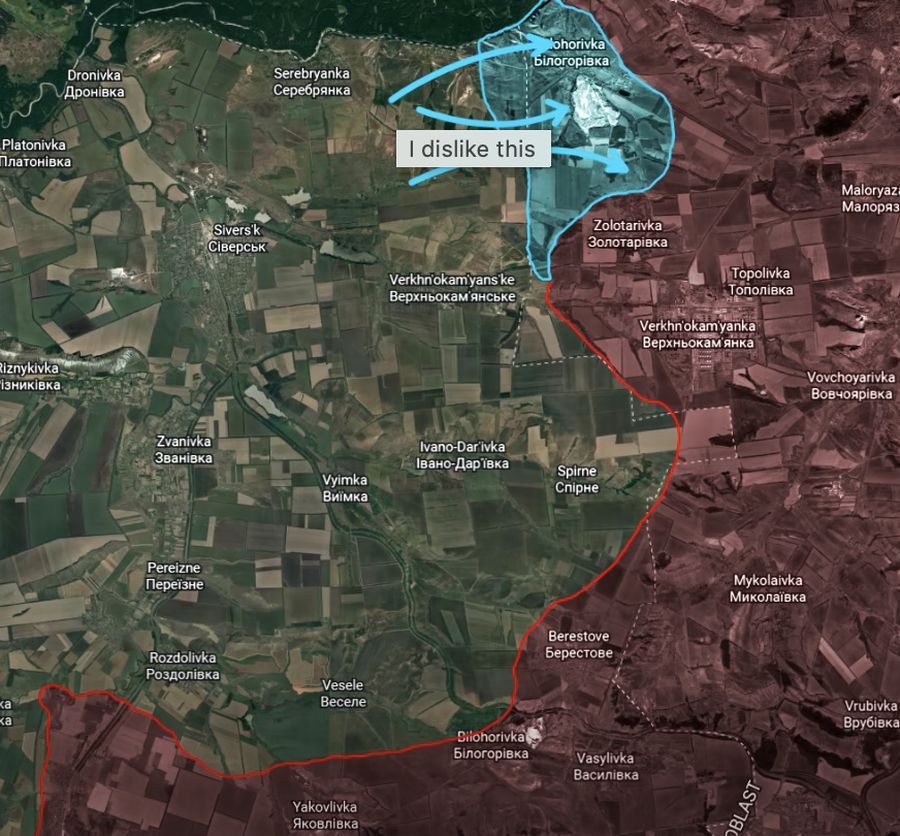
At that time, Russians concentrated just over twenty thousand troops in this direction, making it the smallest Russian troop concentration on the whole front.
However, over the last several months, Russian forces deployed a lot of additional reinforcements in the form of Storm-Z penalty battalions, Chechen Akhmat forces, and elite airborne forces. Such a surge in force concentrations indicates that Russians are rapidly prioritizing Siversk over other directions.
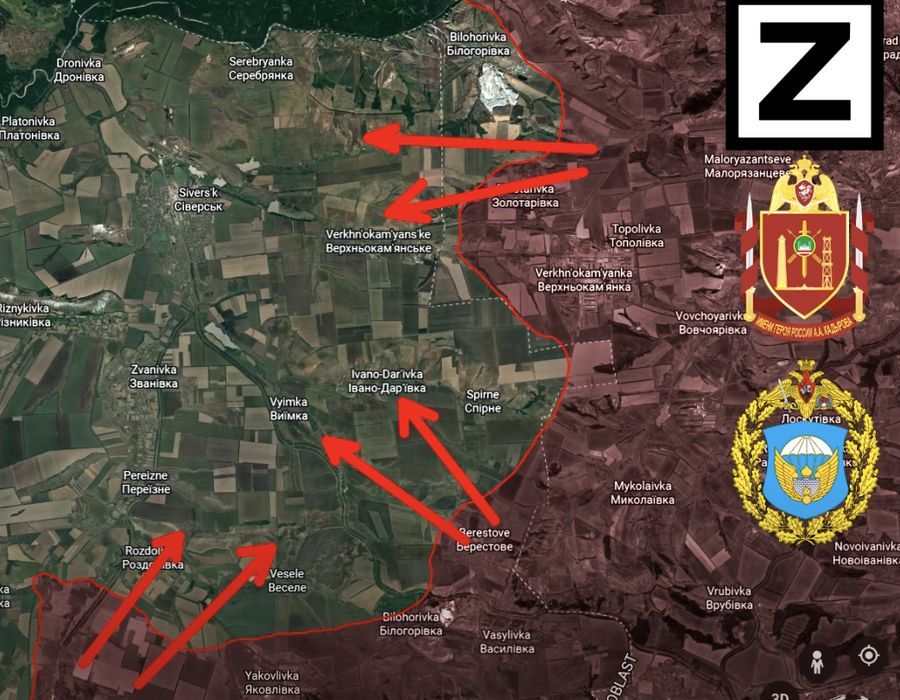
The increase in the number of troops was accompanied by a respective increase in frequency and intensity of fighting. The most intense clashes broke out in three different regions, more precisely, around Rozdolivka, Vyimka, and Bilohorivka.
In the Rozdolivka tactical area, the main goal of the Russian forces is to advance further into the hills to the northwest of the settlement and use them to assert fire control over the main supply road to Siversk. If we look at the topographic map, we can see that the road is behind a hill, so if Russians manage to take the hills, they would be able to assert fire control over the road.
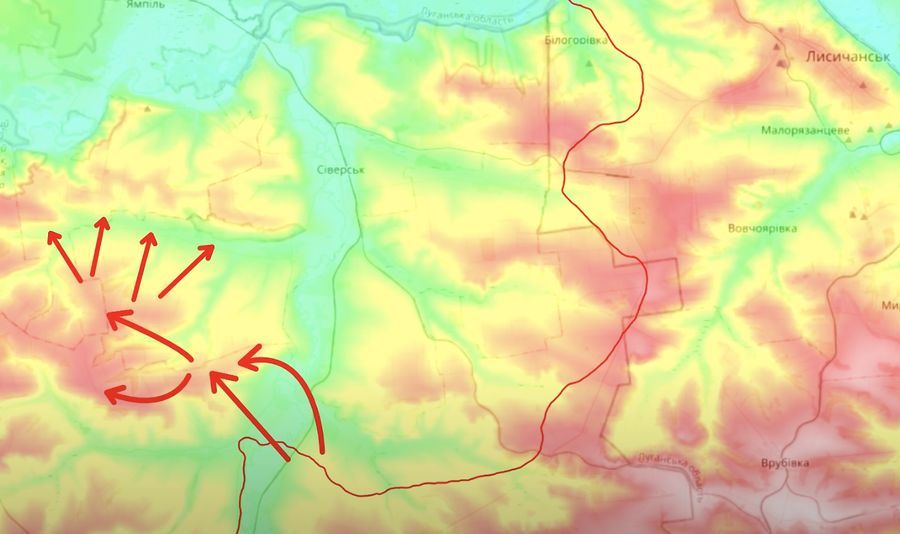
However, this is only one out of two roads that supply the Ukrainian Siversk group, and while the process of supplying them would be time-consuming and longer, it would still be possible. Regardless, Russians are far from reaching this goal, as the Ukrainians are holding tightly onto Rozdolivka and tactical elevations around it.
Beyond Rozdolivka, the Ukrainian defense belt extends westward to a couple of villages, namely, Vasyukivka and Fedorivka. Due to natural obstacles in the form of small rivers, Russian advances towards these villages are extremely complicated. The reason why such operations are difficult to conduct is that there is virtually no room for maneuver, so all Russian assaults are inevitably restricted to predictable direct frontal assaults.

Trending Now
On top of that, the main Ukrainian positions are not in Rozdolivka itself but on the nearby hill to the west, which is almost 200 meters above Russian positions. Such a setting puts Russians at a significant tactical disadvantage for two important reasons. First of all, the Bakhmutivka River is a natural obstacle that complicates potential assaults due to the need to slow down to cross it. Secondly, the river valley is located in the lowlands, meaning that even if Russian assault units manage to cross it, they would need to fight an uphill battle.
The control over the hills also prevents the front line from completely collapsing, in the case Russian forces manage to overwhelm Ukrainians in Rozdolivka with their frontal assaults and take the village. Ukrainians know this, and for the past year, they have been building formidable fortifications around their firing positions on the hills to establish effective fire control over the region.
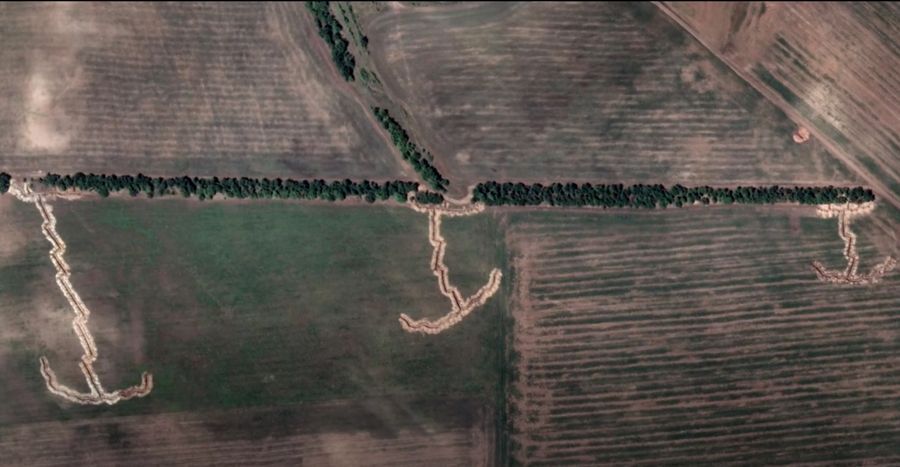
That is why, based on the latest updates, Russians had to turn their focus eastwards towards the village of Vyimka. If we look at the topographic map, we can see that the village and area around the railway embankment are in the lowlands when compared to Russian positions in Berestove. This would give Russians a significant tactical and also operational advantage because it has the potential to affect the fate of the Siversk salient.
A successful Russian advance along the railway embankment, in principle, will allow Russians to launch a direct assault on Siversk town, especially given that the town is not shielded by any advantageous elevations or obstacles between Vyimka and Siversk.
Moreover, Siversk is a small provincial town without any industrial zones or high-rise buildings that can be used for defense. On the other hand, reaching the town would mean that Russians are entering the Ukrainian artillery pocket because the Ukrainians will strike from the tactical elevations to the west of the town on the dominant hills. This way, Ukrainians would be able to control Siversk without a strong presence within the town, and the Russians would be forced to engage in lengthy attritional battles uphill. What would make it even worse for Russians is that Siversk is split in half by a river, so the western part of the town would make for formidable defensive positions with fire control from the hills behind.

Lastly, when it comes to the Bilohorivka tactical area, the main goal of the Russian forces is to establish control over the White Mountain and the hills behind the village. So far, the Russian assaults on the White Mountain turned out to be completely disastrous for the Russians, with high losses in manpower and equipment. For this reason, Russians decided to change their approach to assault in the forest to the south of the mountain, in hopes of establishing a tactical bridgehead that they could use to launch further assaults to the hill behind the village and use it to assert fire control over the main supply road to Siversk. It would also cut off Bilohorivka from its supply line and place Ukrainians in a pocket which Russians could use to force their withdrawal. Furthermore, the fall of Bilohorivka would not only pose additional pressure on Siversk but it would also endanger Ukrainian groups in the forest.
Reaching these tactical goals would allow Russians to declare full control of the Luhansk region. Overall, Russians accumulated large forces for their offensive operations in the Siversk direction and chose their vectors of assault along the lines of mild resistance. But Ukrainian forces have prepared for such developments by fortifying their positions on the tactical elevations to prevent any major Russian advances in the area. However, the whole Siversk offensive might actually be a feint offensive, since Russians may be trying to divert Ukrainian attention from Chasiv Yar by intensifying their assaults and threatening Siversk. In spite of the high pressure, Ukrainians in Siversk are holding their ground tightly without additional redeployment of forces.
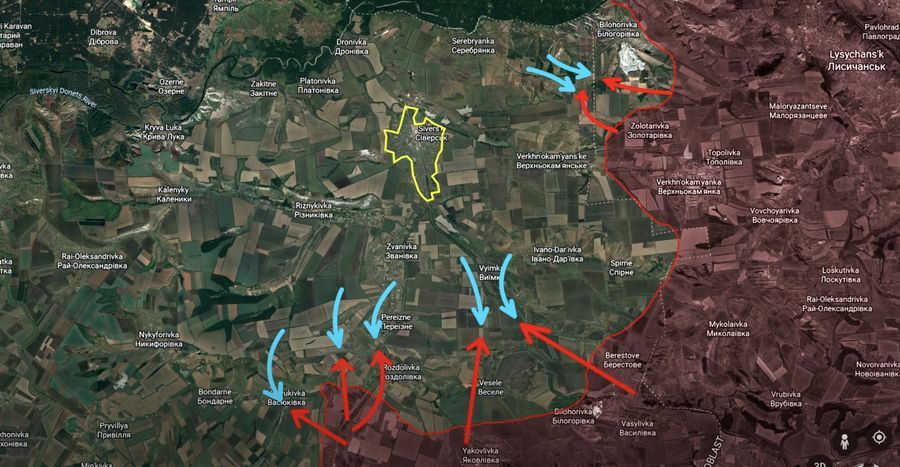
In our daily frontline report, we pair up with the military blogger Reporting from Ukraine to keep you informed about what is happening on the battlefield in the Russo-Ukrainian war.


